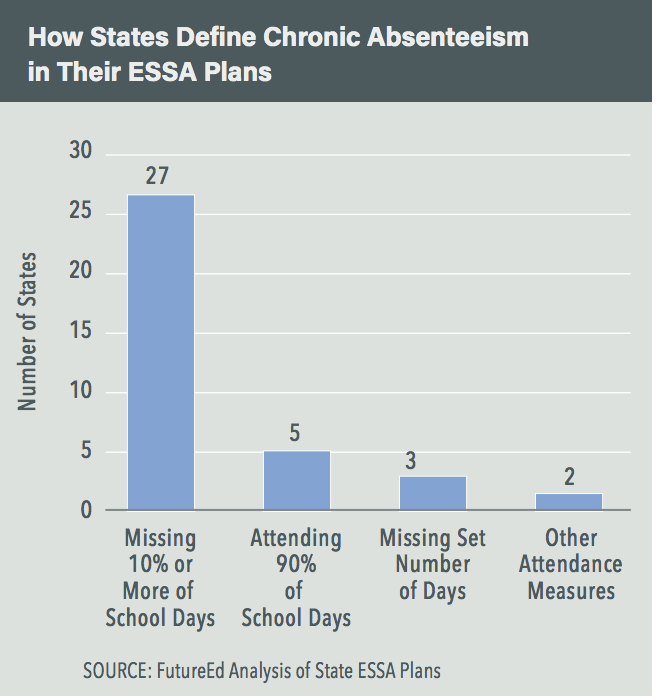This is the *third in our blog series highlighting attendance-related issues that are emerging as states work through the complexities of implementing the Every Student Succeeds Act (ESSA). States were required to submit plans to implement the ESSA by September 18, 2017. Remarkably, more than 70 percent chose some form of chronic absence as an indicator. In this post we focus on the opportunities and challenges that will likely arise as a result.
In 36 states and the District of Columbia, chronic absenteeism will be a part of school accountability, according to a new report from FutureEd, a nonpartisan think tank at Georgetown University. Most states will use it as the “fifth” ESSA indicator, often in combination with factors such as school climate or college and career readiness. Schools will be responsible for meeting student attendance and other achievement goals beginning in 2018.
At least 27 will use the definition of chronic absence that researchers prefer: missing 10 percent of school days. Five will use the inverse, measuring how many students are present 90 percent of school days, while others chose a higher bar or a set number of days.
The use of chronic absence portends a sea change in the way in which schools and districts will define and respond to poor attendance. Until now, schools relied on average daily attendance, which hid individual students’ chronic absence, and truancy, which often set in motion legal, punitive, and largely ineffective consequences for students and families. Now, states using chronic absence will be able to identify students who are at risk, and intervene to get them on track.
What States Can Do to Implement the Metric
Adopting the metric is a great first step. In order to fulfill the promise of improving attendance and achievement, states also need to ensure that districts and schools have effective tools to help implement attendance improvement practices. States should:
Each of these approaches have one factor in common: they don’t rely on blaming the students, parents or educators. Experience shows us that broad, community-wide approaches that address the root causes of absences are what make a meaningful long-lasting difference. Now that so many states are on board, there’s more opportunity than ever to get this done.
*Read the previous blogs in our series, High Quality Attendance Data is More Important Than Ever, and Making the Most of Attendance Indicators.